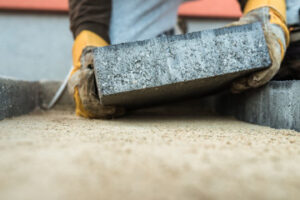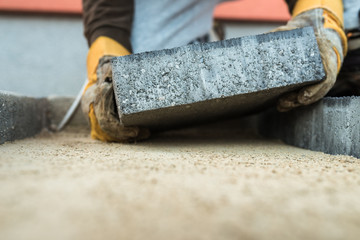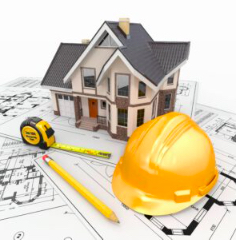Foundation repair is a key part of keeping a home structurally sound, maintaining or increasing resale value, and preventing future issues. If left untreated, even minor cracks or sticking doors can lead to serious problems.
There are a variety of methods for repairing foundational damage, but local contractors familiar with the soil and climate conditions can offer the most effective solutions. Contact Foundation Repair Greensboro NC for professional help.
If you’re dealing with a serious foundation problem, bring in a professional to evaluate and make targeted repairs. A professional engineer or foundation specialist can provide full diagnostics and recommendations for repairs and replacement, including how much each will cost. They will take into account factors like construction materials, how severe the damage is, and how widespread it is.
In minor cases, masonry patching and sealants may suffice. Hydraulic cement, vinyl concrete, epoxies, and silicone can be used to fill minor cracks and waterproof masonry. However, it’s crucial to take the time to carefully choose and apply a sealer that is appropriate for your home.
It’s also essential to consider the source of the damage and how it can be prevented in the future. Most often, foundation issues stem from unstable soil and varying moisture levels. By identifying and managing these factors, you can avoid more costly structural repairs in the future.
Foundation repair methods vary by region, so choose a contractor that is familiar with local conditions. Experienced contractors understand the unique challenges of our climate, and they can provide you with effective solutions for your specific problem. Additionally, they can explain the process and answer any questions you might have.
Many homeowners wonder whether they can remain inside their homes throughout the duration of a foundation repair project. The good news is that you can, and it’s often faster and easier than you might think.
Some methods of repair, such as steel piers and bell-bottom piers, can be completed in just a few days or weeks. Other options, such as mudjacking, are considerably quicker and can be done in a few hours.
You can also prevent future problems by regularly inspecting your foundation and taking preventative measures. Keep gutters clean, manage moisture levels, and plant trees at a distance from your foundation to protect it from roots. With regular upkeep and vigilant monitoring, you can extend the life of your foundation and protect your investment.
Underpinning
As the ground shifts and sinks, foundations can weaken, leaving them susceptible to collapse or structural damage. Underpinning is a way to increase the load-bearing capacity of an existing foundation by adding more support beneath it.
Often, this will involve digging beneath the existing footings and pouring new concrete underneath them to create stronger props for the foundation. Depending on the method used, underpinning can be quite costly. However, the added stability is usually worth the investment.
Some signs that a home may need underpinning include visible cracks in walls, especially those wider than 1/4 inch. Uneven floors can also be an indication of shifting and sinking, as can gaps around doors or windows. This method is most commonly used for commercial and residential properties that need a deeper and wider foundation, as well as homes in areas with soil conditions that are more prone to movement and sinking.
To determine whether or not your foundation is in need of underpinning, a professional will complete a thorough inspection and provide a detailed report that will detail the extent of the damage as well as recommend any necessary repairs or maintenance. If your foundation is in need of underpinning, the engineer will then pinpoint where supports will be needed. Most often, these will be along the perimeter of the house where sinking is most common. However, in about 10% of cases, support will also be needed under the middle of the house.
There are a few different methods for underpinning, including mass concrete underpinning, beam and base underpinning, and more modern options like resin injection. The best method for your property will depend on the current condition of the foundation, the quality and stability of the soil, and any planned future additions to the structure that will need additional load-bearing abilities.
The most common type of underpinning is the poured concrete pier. This is a method that involves digging and drilling holes beneath the existing footing, filling them with wet concrete, and letting it cure before attaching it to the home. Helical piers are another popular underpinning option that eliminates the need to reach bedrock and can be used in a variety of soil conditions.
Structural Repairs
Structural damage to buildings is dangerous and needs to be repaired as quickly as possible. Cracking walls, sagging beams and leaning walls are not just unsightly but also a serious threat to safety. If left untreated, these problems can lead to structural deterioration and even collapse. Timely repairs can restore stability and ensure that the structure is safe to live in for years to come.
There are several elements that influence how long structural repairs take, including the type of problem, the size and scale of the project, and the materials used. Minor issues like small cracks in the walls can often be resolved within a few days, but major problems may require extensive inspections and planning before any work can begin. This can stretch the timeline for the repairs considerably.
In general, there are two kinds of structural repair projects: general and structural. Repairs that affect comfort and aesthetics, such as fresh coats of paint or a new wallpaper, are considered general maintenance and don’t threaten the structural integrity of the building. Structural repairs, on the other hand, are more extensive and involve restoring or replacing structural parts.
Foundation stabilisation is one of the most common types of structural repairs. This is done by re-establishing the connection between the building and the soil through a process known as underpinning. This can be achieved by excavating beneath the building and pouring in concrete, or through piling which involves driving or drilling lightweight metal piles under the foundations and filling them with concrete to secure the structure. Cavity wall ties can be replaced with new ones to restore lateral restraint, and steel reinforced concrete anchors can be used to stabilise walls that are seriously bowed or leaning.
If you think your building is suffering from any of these problems, it’s crucial to contact a specialist as soon as possible. A professional can help identify the problem, recommend solutions and create a structural repair plan that will address the issue as effectively as possible.
Long-Term Maintenance
When it comes to the structural integrity of a building, the foundation is paramount. That’s why commercial property owners need to take any issues seriously and consult a foundation repair company as soon as possible to prevent damage that can lead to costly downtime.
Like a surgical procedure, foundation repairs are complex, requiring professional expertise and equipment to perform safely. That’s why it’s important for property managers and project directors to find a contractor they can trust. A quality, reputable foundation repair expert will provide transparent pricing and financing options, allowing them to get the job done without breaking the bank.
Once the foundation is repaired, it’s important to protect it from further damage with a thorough and comprehensive maintenance plan. That includes proper drainage, soil stabilization, and regular inspections. Poor drainage is one of the leading causes of foundation failure in places like Rockwall and Rowlett, because it allows water to pool around a home, increasing hydrostatic pressure that can undermine the foundation. It’s also important to ensure that the ground slopes away from the house, directing water and moisture away from the foundation.
Stabilizing a foundation with piering or slabjacking is another great way to reduce the risk of future problems. These methods involve driving steel or concrete piers deep into the ground to bypass unstable soil layers and anchor the structure to solid bedrock or stable soil layer.
Even after foundation repair, it’s crucial to watch for signs of new cracks, moisture in the basement, and misalignment of doors and windows. These are common indications that the foundation is shifting, and identifying them early can save property owners from more significant and costly structural damage down the road.








